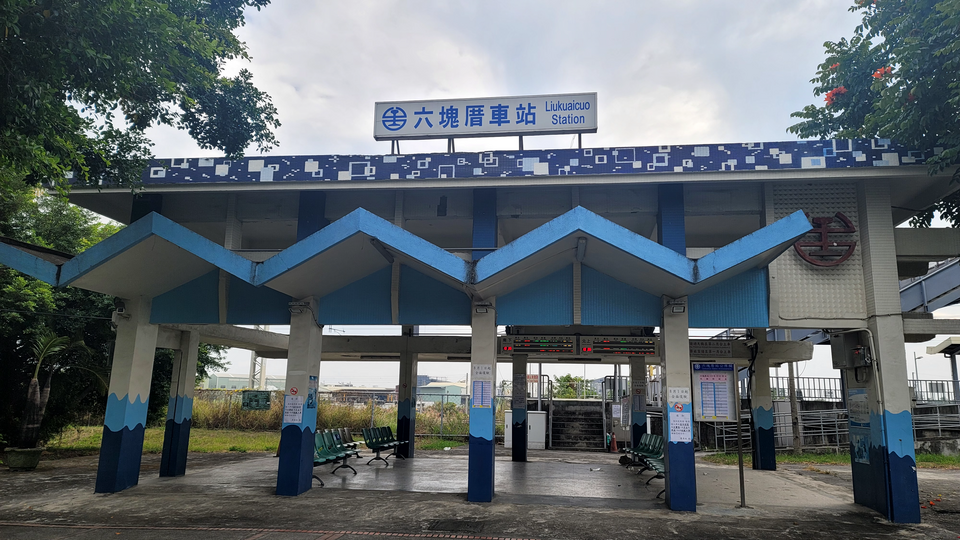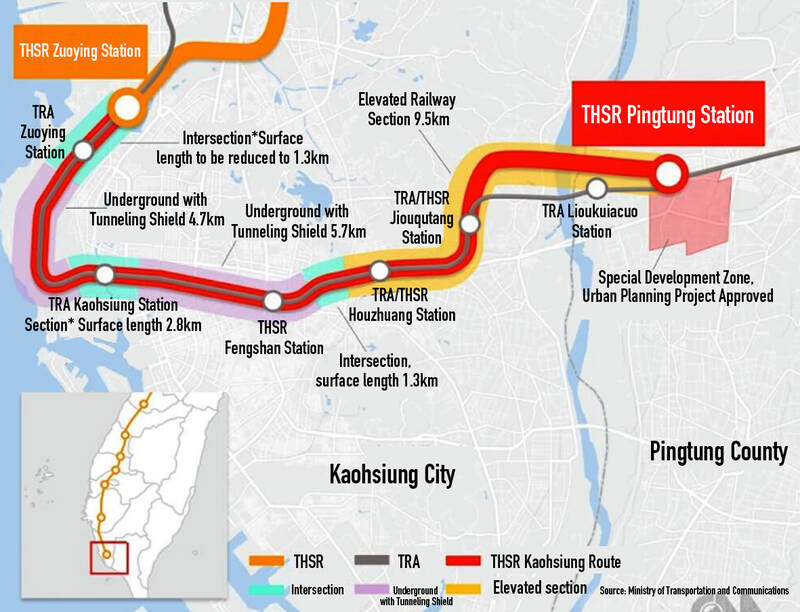By KHT AI Agent/Staff
On December 28, 2024, the Executive Yuan switched the Southward Extension to the Kaohsiung plan: continue from Zuoying [左營] along the TRA Kaohsiung underground corridor into Kaohsiung Station, then cross the Gaoping River [高屏溪] to a new Pingtung terminus at Liukuaicuo [六塊厝]. The change reset five years of work on the Zuoying plan and requires redoing comprehensive planning and environmental impact assessment.
The bureau’s long-term plan is to build a loop to circle Taiwan proper that would consist of four sections running from Taipei to Hualien, Hualien to Taitung, and Taitung to Kaohsiung, in addition to the section from Kaohsiung to Taipei, with each segment taking 90 minutes to travel.
Scope and cost snapshot
The line would be about 25.9 km, with 16.4 km underground between Zuoying and Fengshan [鳳山], and 9.5 km elevated from Fengshan to Pingtung. A 2019 estimate put costs near NTD 120 billion, while sector assessments now point to at least NTD 200 billion and potentially up to NTD 250 billion, reflecting inflation, market conditions, and added scope such as a Fengshan station. UDN. The Taipei Times reported that officials expect to break ground on the Kaohsiung-Pingtung project in the first half of 2028. If design, tender, and construction advance smoothly, work is estimated to take about 11 years, placing the earliest full opening around 2039. CNA; Global Views City
Engineering method and urban impact
To limit traffic disruption, the city section will rely as much as possible on shield tunneling, instead of long cut-and-cover works. The bureau has shortened open-cut lengths to about 1.3 km near Zuoying and 2.4 km near Kaohsiung Station, and will coordinate interfaces with the Kaohsiung MRT Yellow Line Y10. Land acquisition and access details will be clarified during planning and EIA supplements. Railway Bureau briefings

Stations and interchanges
Kaohsiung Station will be a co-located hub with Taiwan Railways and the metro. In Pingtung City, the plan is to relocate the current TRA Liukuaicuo station to co-locate with HSR, with tail tracks reserved for potential extension. Railway Bureau project page; CNA
Policy signals and scrutiny
Kaohsiung Mayor Chen Chi-mai [陳其邁] stated: “As long as it is technically feasible, minimally disruptive and benefits Kaohsiung’s long-term plan, we support it.” (original quote trimmed) UDN
Debate continues on costs, ridership, and self-financing. The Taiwan Railway and Spatial Planning Society has questioned demand and urged strengthening regional rail, metro, and buses first. UDN – academic views; UDN – procedure
Impact
The Kaohsiung alignment concentrates intercity and regional transfers at Kaohsiung Station and brings HSR into Pingtung’s urban area, supporting labor mobility and logistics across Southern Taiwan. Execution will hinge on tunneling risk, traffic management, and timely permits. Delivery discipline is vital given the 2039 full-opening target and the potential value unlocked by staged service.
| Review | Pros & Cons |
|---|---|
| Positives | Integrated hub gains; Urban accessibility; Lower surface disruption; Clearer timeline |
| Negatives | Higher cost risk; Complex tunneling; Lengthy approvals; Ridership uncertainty |
Statistics
| Total length | ≈ 25.9 km |
| Underground | 16.4 km Zuoying to Fengshan |
| Elevated | 9.5 km Fengshan to Pingtung |
| Stations | Kaohsiung Station co-located with TRA and metro; Pingtung at Liukuaicuo co-located with relocated TRA station |
| Planning budget | NTD 172.8 million across Forward Plan phases 2-4 |
| Cost guidance | 2019 estimate NTD 120 billion; sector view now NTD 200-250 billion |
| Process | Comprehensive planning 1.5 years; Phase 2 EIA ≥ 3 years; Construction ~11 years |
| Earliest full opening | 2039, with staged opening under review |
Sources & References
Decision to adopt Kaohsiung plan and process reset — CNA;
Route, timeline and partial opening discussion — CNA; Global Views City;
Length, underground-elevated split and evolving cost range — UDN Economic Daily;
Railway Bureau project page, scope, stations and planning budget — Railway Bureau MOTC;
Engineering method briefings and cut-and-cover reductions — Railway Bureau news;
Mayor Chen’s support principles — UDN;
Academic critiques on ridership and self-financing — UDN;
Procedure clarification — UDN.



